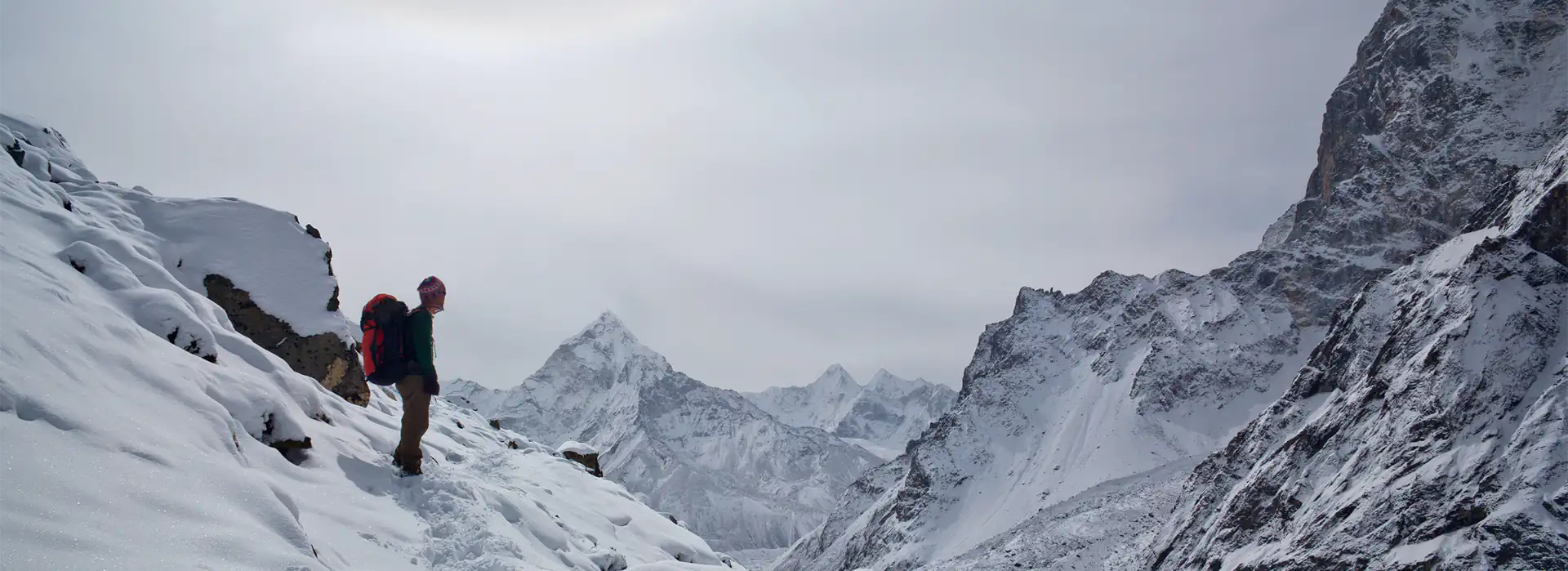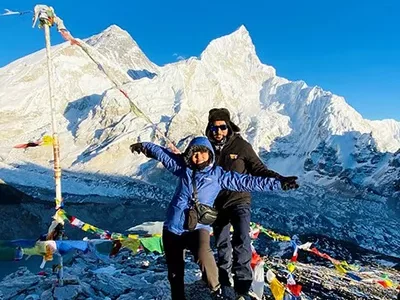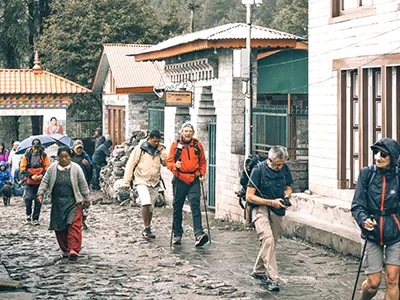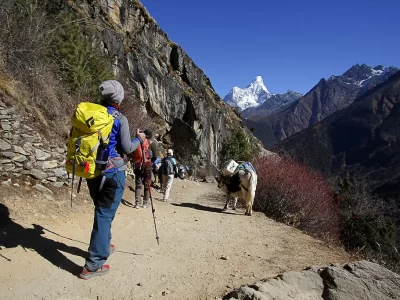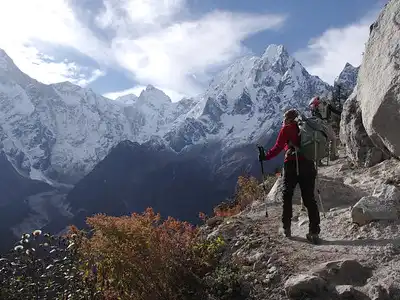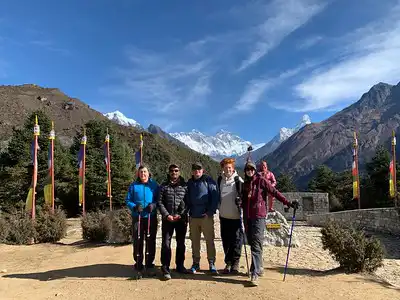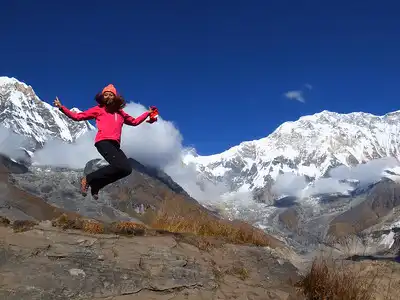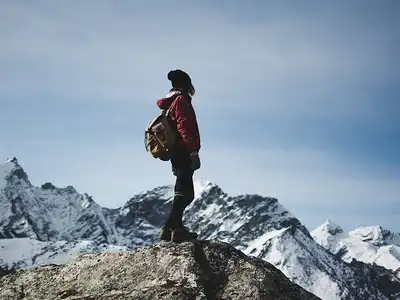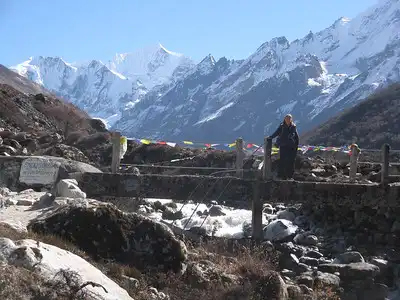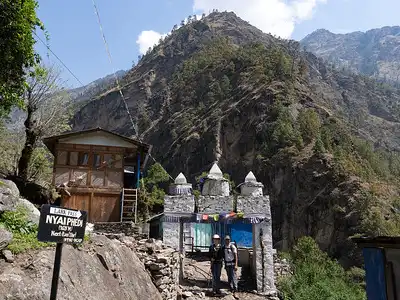Every trekker in Nepal’s mountainous regions looks forward to spring in March. Spring comes and stays for a few months, making it a great time to hike everywhere. In March, people from all over the world leave their homes and travel to Nepal to trek. You can trek Everest Base throughout the year, so in this article, we will elaborate on Everest Base Camp Trek in March.
It is, without a doubt, the best trek in the world. The most exciting thing about the trek is Mt. Everest, the tallest mountain in the world. But the trek isn’t just about Mount Everest and its base camp. People walk the trail that has everything to Everest Base Camp, which is a fantastic walk.
Everything starts with the lush plants in the Everest Region. Then, as you go further, you start to see Sherpa villages, Buddhist monasteries, and suspension bridges. And slowly, the heavenly Everest region’s snow-covered mountains that reach the sky, beautiful landscapes, and broad valleys start to come into view. This flow of beautiful things will last until the end of the trek. So, it is called the best trekking trail in the world.
And March is a good time to do the Everest Base Camp Trek and see its beautiful sights. March is a good month for trekking because the sky is clear and blue, no rain clouds around, and the weather is getting warmer. By March, the cold weather and winter conditions are starting to go away, and a calm atmosphere is starting to spread.
Because of this, the Everest Base Camp Trek in March is a unique way to hike in the Himalayas. The month lets people see a side of the Everest area they have never seen before.
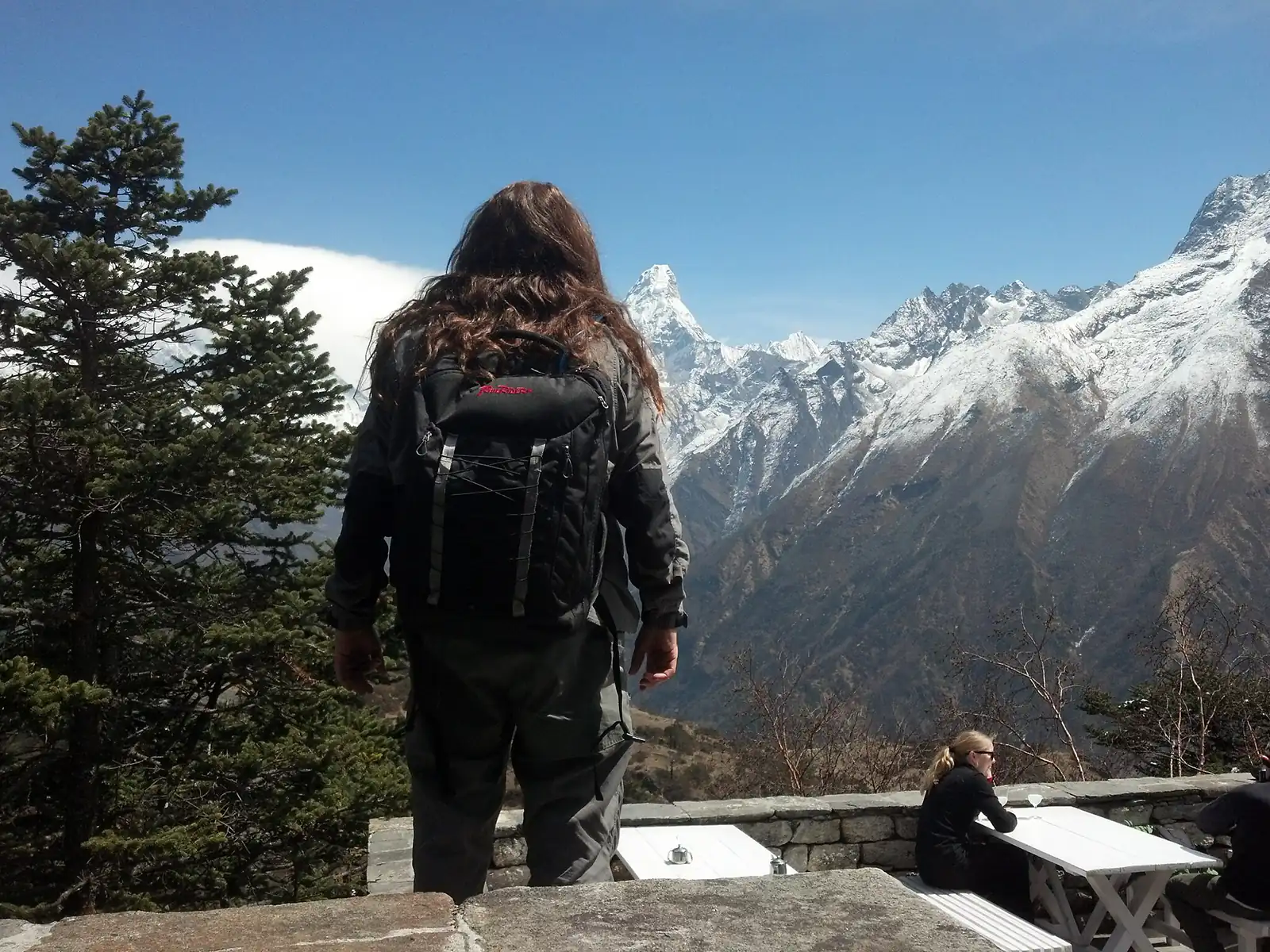
The best parts of the Everest Base Camp Trek in March
- Hike in the best conditions for hiking.
- Walk to the foothills of Mt. Everest, the highest mountain in the world and the “roof of the world.” • From the top, see Mt. Everest, Mt. Lhotse, Mt. Ama Dablam, Mt. Nuptse, and many more.
- Find yourself near the rivers and streams in the Himalayas.
- Move along the best views of mountains, valleys, landscapes, and meadows.
- Spend time with the strongest people on earth, the Sherpas, and learn how they live.
- Trek and explore the area regardless of rain, snow, and other bad weather.
- Move through the Everest area’s lush vegetation.
- See many prayer flags hanging from bridges, monasteries, gompas, and other Buddhist places.
How the weather was in the Everest region in March
Basanta Ritu is the name for Nepal’s spring, which happens between March and May. Basanta Ritu is thought to be a romantic season because it is accessible to the soul and feels good and because it is lush and green.
The air is not as humid as it is in other months. Since there isn’t much water in the air, there aren’t many chances that clouds will form, and so there aren’t many chances that it will rain.
There will also be less chance that your flights to and from Lukla will be canceled. This means you will only have to wait a few days for a flight or deal with the hassle of being late.
The temperature changes daily and night in the mountains, including Everest Base Camp. This makes the mountains unpredictable. The wind also significantly affects how hot or cold it gets.
Also, you can expect the temperature to drop as you go higher up. The weather is warmer at the Luka airport and Namche Bazaar, which are 2800 meters and 3400 meters above sea level, respectively than at Base Camp.
The average temperature during the day is between 12 and 15 degrees. At night, the temperature can range from 5 degrees to -10 degrees. It depends on whether you’re staying in a hotel or teahouse or camping out in the open.
The temperature of Everest Base Camp in March
As was said, the Everest region is still cold in March but not like in January and February. The sun will make the days warmer in some way. But the temperature drops a lot at night and early in the morning. Don’t think March is the warmest time to go hiking, and don’t bring summer clothes. Near the Himalayas, it is always cold, and the temperature stays close to freezing.
Why go on a trek to Everest Base Camp in March?
A Much More Peaceful Trails
March is less busy than April and May, which are the last months of spring. People start coming in large numbers in April and May, after March. March is an excellent time for the trek, but most people prefer to plan it for April or May. March sees people but relatively less number. Trekking in a crowd might be something other than everyone’s cup of tea. Some people prefer to hike on relatively quiet trails. If you’re one of them, March might be the right time.
Clam weather and temperature
Since the weather and temperature are calm in March, it makes sense to do the Everest Base Camp Trek then. The weather this month is perfect for going on the trek. March is a month with clear skies, sunny days, and mild weather. The temperature will drop a little as you go higher. But it rarely rains in the lower areas and rarely snows in the higher areas in March. It would be best if you went on the trek when the weather is much better.
Happy surroundings and lots of greenery
As March and Spring come, the colors of the world around us start to change. All the trees that are now pale and dry want green leaves in a month. Rhododendron trees grow in the forests around Everest, and their red flowers open at the beginning of March. It looks like the sky has taken off its old clothes and put on new ones. March is the time to visit the Everest area if you want to see it at its most colorful.
Mountains with no obstacles
What if you got to Everest Base Camp but have yet to see Mount Everest? How sad! However, that will never happen if you do the trek in March. There is no rain in March, so it is a dry month. That means it won’t rain and there won’t be any clouds so you can see Everest all day. If you want to hike all the time with views of mountains, March is the month for you.
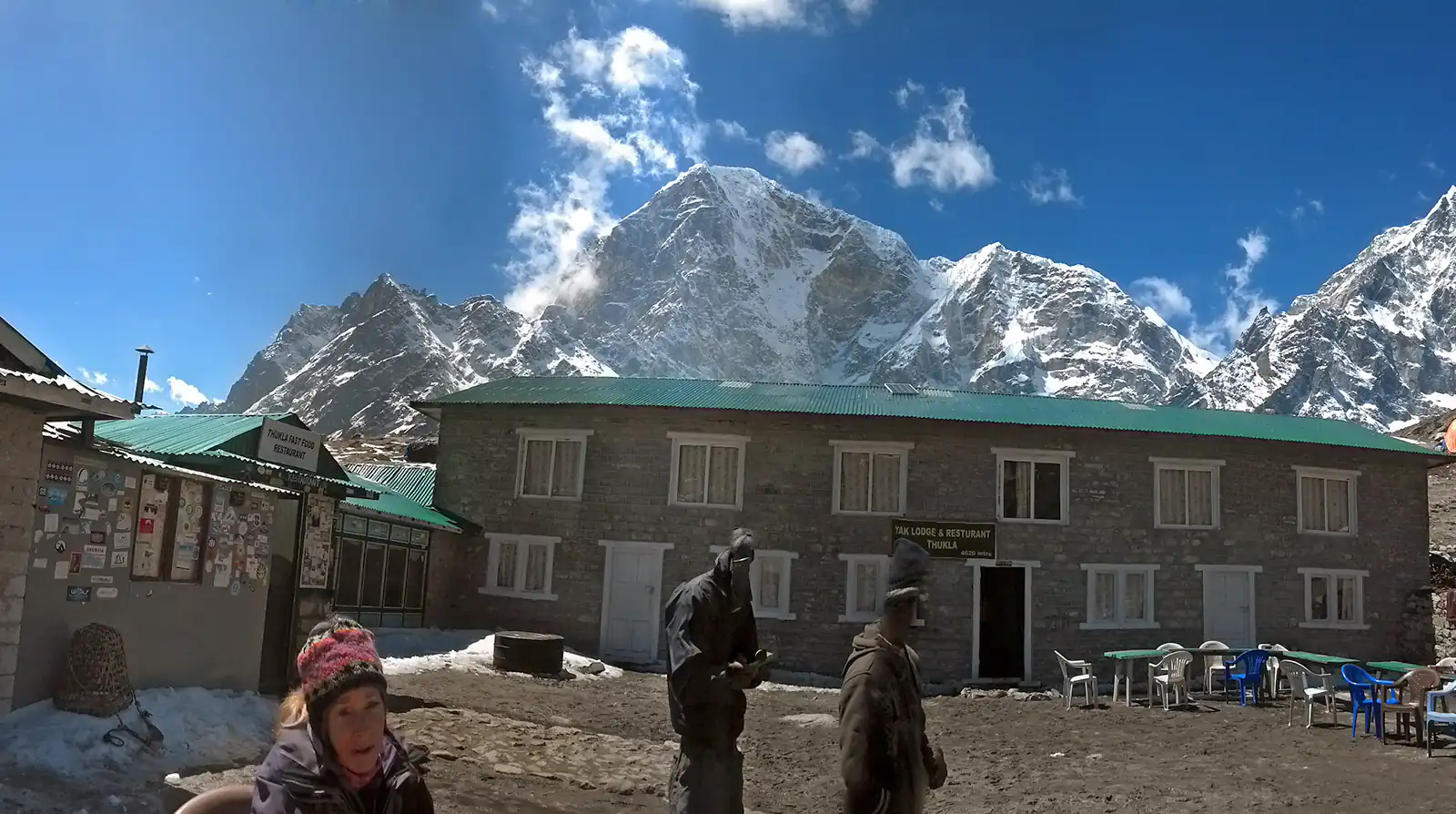
Everest Base Camp Trek
Luxury Everest Base Camp Trek
Everest Base Camp Short Trek
Tips for the March Everest Base Camp Trek
Prepare both your body and your mind.
You now know that the Everest Base Camp Trek is challenging. It would help if you prepared both physically and mentally for this trek. If you have never been on a trek before, you should start training at least four months before the trip. By doing that, you’ll be able to handle more pain and be able to handle any problems that come up on the trek. In the same way, you need to be ready mentally for the trek. On the trek, you will need a strong mind to push you forward no matter what happens.
Look at the weather report.
Remember to check what the weather will be like in March. The weather in the highlands is hard to predict, and you never know when it might get worse. So, look at the information and plan the trek accordingly. Even if there’s a chance of rain, you’ll already have your rain gear if you know what the forecast says.
Bring along the right clothes.
March is hard to pack for because the weather is a mix of winter and spring. So, you’ll have to pack your backpack to fit both of these things. Things you should remember are warm jackets, gloves, and hats. Check everything you’ve packed again to ensure you’ve brought everything you need.
Choose the right company for trekking.
It can be hard to do the Everest Base Camp Trek in March. The weather is still changing in March, making it hard to hike yourself. Instead, find a suitable trekking company and go on the trek with them. You don’t have to hire a guide or porter because the agency takes care of everything. Plus, there’s nothing you need to worry about. If you want a safe and easy trek, it’s better to go through a trekking agency.
Get going on the hike early.
Every day, you have to walk for about 5 to 8 hours. If you start the hike early, you’ll have more time than if you start it later. And you can use that time to go on more adventures or to take your time walking. The days are shorter in March, and it gets dark too quickly. If you are ahead of time, you can cover the distance you need to for the day on time. So, begin your hike early in the morning, but early enough.
Keep your body always hydrated.
In high places, your body loses water quickly. And hiking in the mountains when your body is dehydrated can make you sick. You wouldn’t want to tease heights, would you? Remember to drink enough water when you’re in the mountains. Do not drink any alcohol or drugs, as they will speed up the process of dehydration.
How hard is it to make the Everest Base Camp Trek in March?
Depending on your route, the Everest Base Camp Trek can take anywhere from 12 to 16 days. If you choose the Chola pass and Gokyo lake trek route, you must add a couple of days to your schedule. On average, the Everest trek takes between 5 and 8 hours daily.
The trail stays at an altitude of 4,000m and moves along well-marked paths that are easy to follow. For the trek, you can learn how to climb technically. To get to Chola Pass, you must walk on an icy glacier. The high-altitude trek goes up to an altitude of 5000m and ends at Kala Patthar, the highest point (5,643m).
You will also be carrying a lot of heavy luggage. When you hire a porter, you don’t have to carry as much. The trails go up and down all the time, and some severe and steep obstacles can make certain parts very hard. When hiking at such high altitudes, there is always a chance of acute mountain sickness.
You shouldn’t climb more than 600m in one day of trekking for your safety. Overall, the trek to Everest Base Camp is difficult and strenuous.
Tips You Need to Know for the March Everest Base Camp Trek
Start your hike early.
In March, the days are short, so you need to start your hike soon. It also helps to get to the place before it gets dark. It’s not easy to hike for almost 7-8 hours during the day, so you’ll need to stop often. You can quickly get where you’re going without getting hurt. So, it would help if you started your hike early.
Get ready ahead of time.
An essential part of any trek is getting ready for it. Around Everest, the weather is cold in the mornings and at night. So, you will need to dress in layers to add or take off clothes depending on the weather.
For comfort, you should bring an extra down jacket and sleeping bags. The base camp area might snow every once in a while. You should also bring things like trekking shoes, clothes that won’t get wet, toiletries, first-aid kits, and anything else you think is essential.
Regularly acclimating and drinking water.
The Everest Base Camp trek is high, so you must take time to get used to the altitude. To deal with altitude sickness, the trekkers must also move slowly and drink water often. The process of acclimatization makes your body take in more oxygen.
It also helps you get used to living at a high altitude faster. The same thing happens to your body when you drink enough water. So, getting used to the altitude and drinking water often has many benefits during the trek.
Book in advance
As the peak trekking season in the country starts, the tea houses and lodges may be full. You must book your trek package early for the Everest Base Camp trek in March.
You must choose the best plan and book as soon as you can. This keeps you from having to worry about food and places to stay along the trail.
Different routes for trekking to Everest Base Camp
Around the Everest Base Camp, there are many hiking trails. The first step before you start your trip is to take an exciting flight from Kathmandu to Lukla. The regular path from Lukla to Everest Base Camp goes through Phakding, Namche, Dingboche, Lobuche, Gorakshep, and Everest Base Camp’s unique towns back the same way.
The Classic Everest Base Camp Trek, also called the Jiri-EBC trail, begins in Jiri, heads toward Phakding, and ends at Everest Base Camp. People who want to avoid taking the exciting flight from Kathmandu to Everest Base Camp can take this route instead.
If you want more adventure on the trail, you can also take the Gokyo-EBC trail or the alternative route that goes through the Cho La and Renjo La passes. On this challenging trail, you’ll go through an exciting glacial path. The Gokyo Lakes are so beautiful that they will take your breath away. You can pick the trek that meets your needs and wants the best.
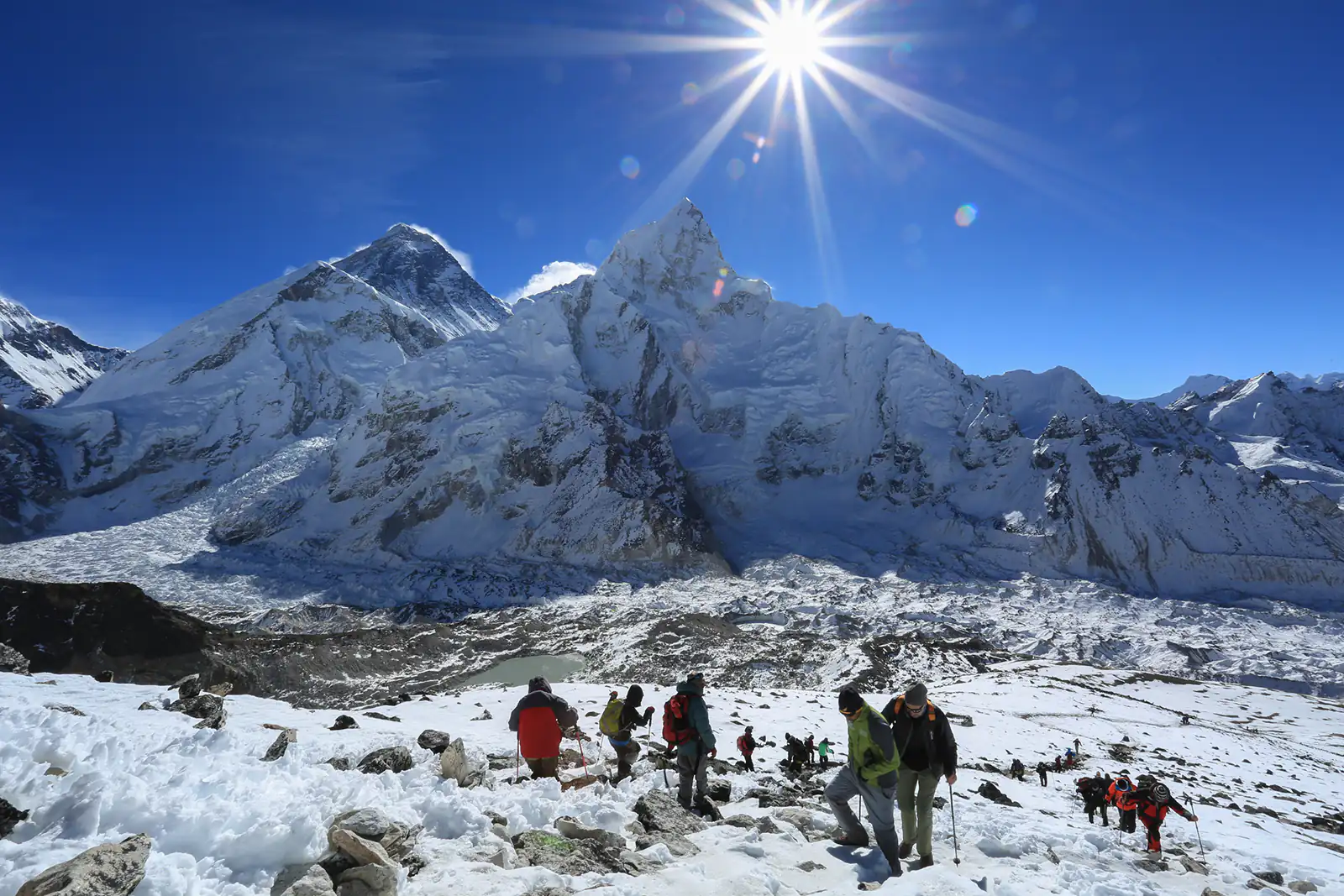
Things to think about if you’re going to hike to Everest Base Camp in March
Getting a guide and a porter
A professional guide gives a trekker a lot of help and direction along the way. Even though the path to Mt. Everest Base Camp is well-marked, it is best to have a guide with you. Sometimes you could get lost on the trail because it goes in long, winding ways.
So, a guide is beneficial and can also give you essential information. They also help you learn about the local culture and traditions, so you don’t say or do anything to upset the people there.
A porter is not the same as a guide, but some guides work as both. During the trek, a porter will carry your heavy bags for you.
Getting fit and working out
It would help if you were in good shape for the Everest Base Camp trek. The path on the trek in the Everest area goes up and down. The trek can sometimes be challenging, so the people going on it must start training at least two weeks before the trek. Cycling, swimming, hiking, and other cardiovascular activities must be part of the training plan. During the EBC trek, you must often stop and drink lots of water.
Permits: All trekkers must have a TIMS (Trekkers’ Information Management System) trekker’s permit to go on the EBC trek or any other Nepal trek. There are also permits from the city or town. Local permits cost USD 20 and can be obtained from Monjo, the Chubu region, and the Nepal tourism board in Kathmandu.
A separate permit is needed to go to Sagarmatha National Park. There are several checkpoints for permits along the trail in the area. You can get a permit for Sagarmatha National Park in either Monjo or Kathmandu. It costs USD 30 plus tax from the government.
The Gauri Shankar National Park Permit is needed if you drive from Kathmandu to Jiri instead of Lukla to start your trek. The permit can be bought at the Shivalaya checkpoint for about USD 20.
Altitude sickness
The trek to Everest Base Camp is known for making people sick because of the high altitude. The trip is challenging because the air is dry, the temperatures are dropping, and the amount of oxygen in the air is getting lower. This makes it more likely that trekkers will get altitude sickness.
Sir Edmund Hillary set up the health post at Pheriche for the Himalayan Rescue Mission and the Kunder hospital at Namche to help trekkers get information and medical care. If altitude sickness isn’t treated right, it can kill.
Travel Insurance
Before trekking in the Everest region, the trekkers must have travel insurance. Accidents, injuries, or sicknesses can happen anytime, and if you can’t keep going, you might need a helicopter to take you home.
The evacuations by helicopter cost between $5,000 and $10,000. Proper travel insurance covers all of these costs and the costs of missing a flight because of bad weather.
Related Article:
Conclusion
In March, you only get one chance to trek to the Everest Base Camp. The weather is excellent, and the sky is clear blue, so hiking is a pleasure. The best thing about the trek is seeing the beautiful snow-capped mountains.
There are tea houses and lodges along the trail that are busy and full of life. Overall, the fantastic Everest Base Camp Trek in March is an excellent adventure for people who love to travel and get lost in nature.
